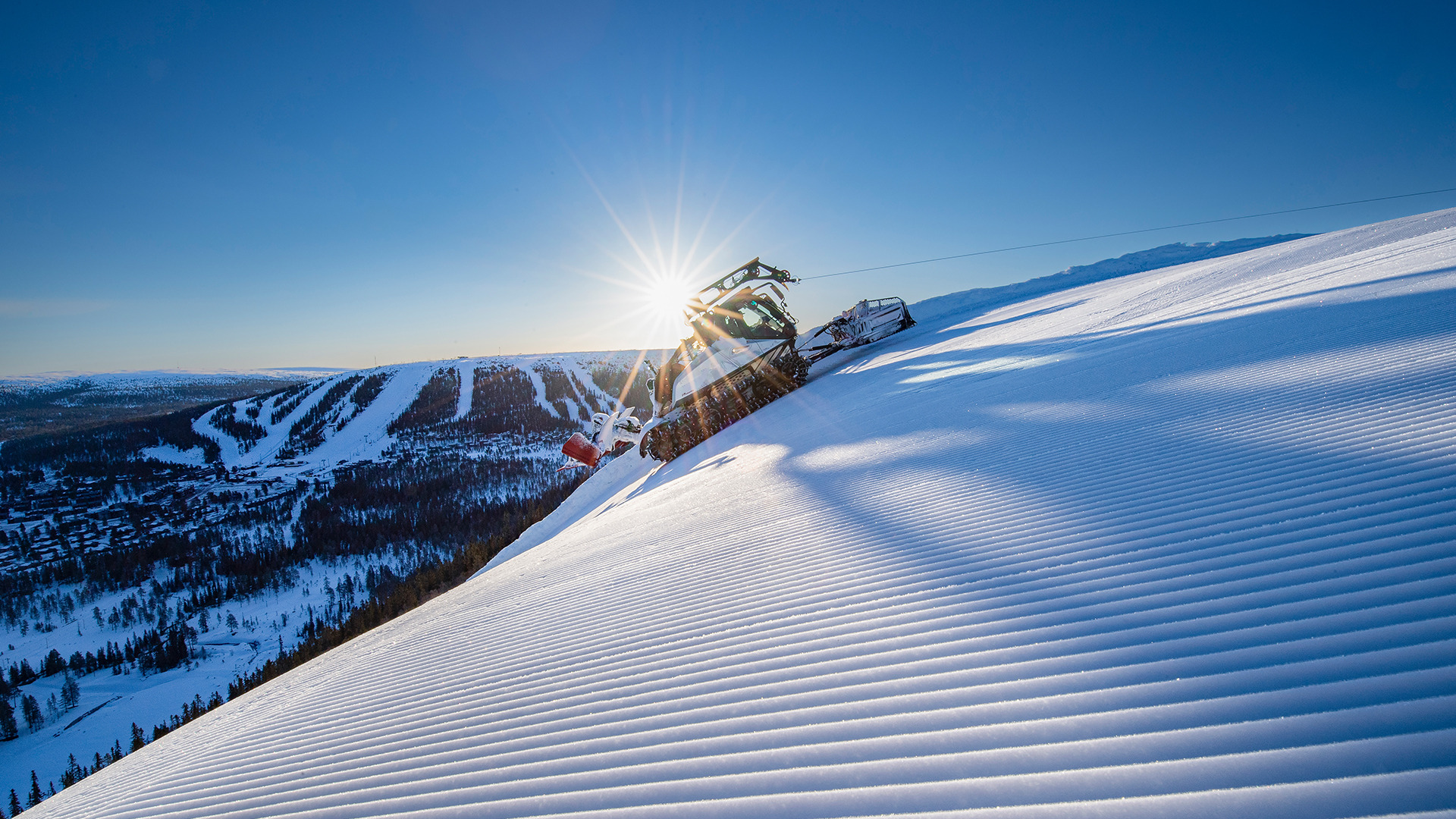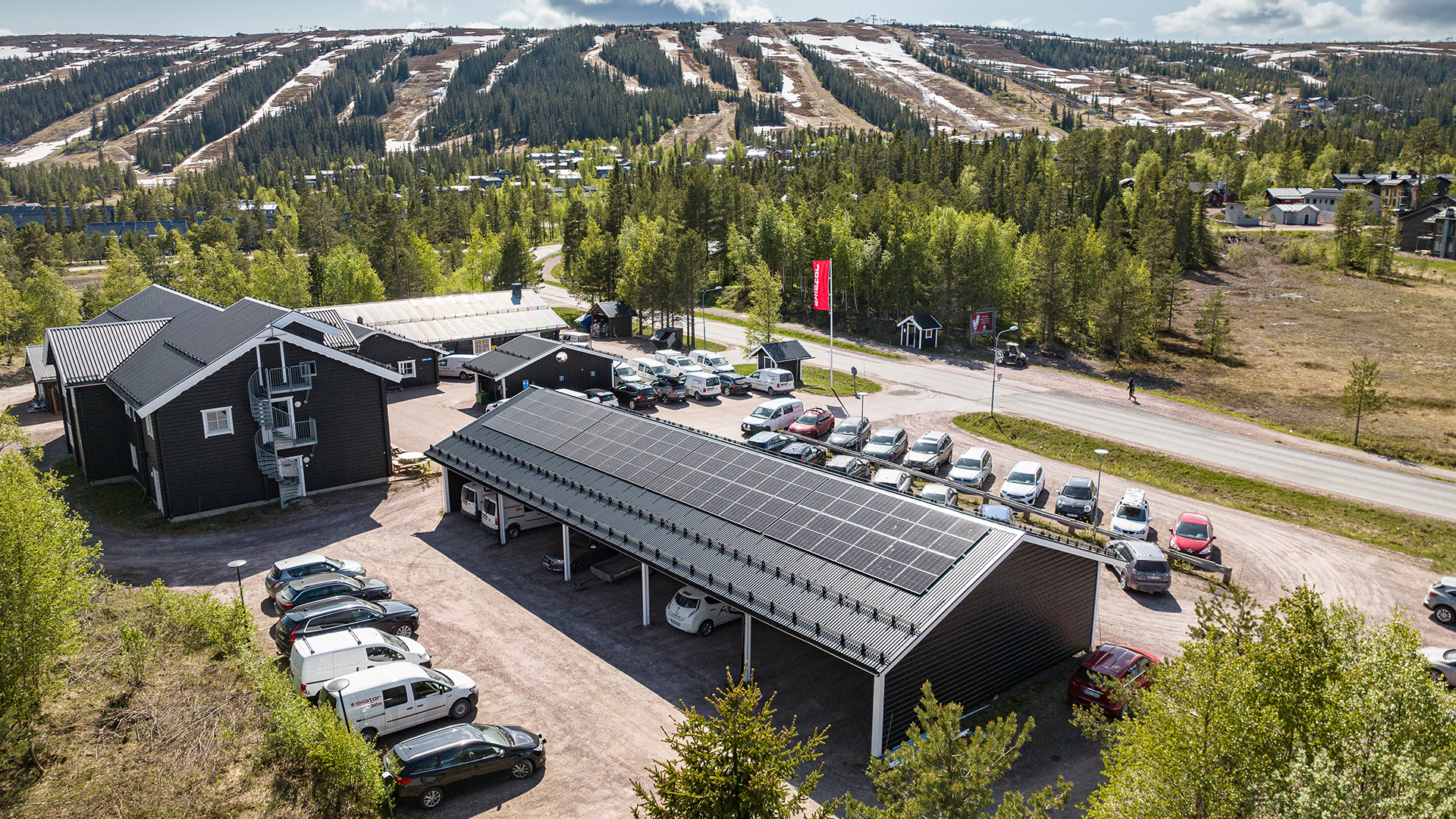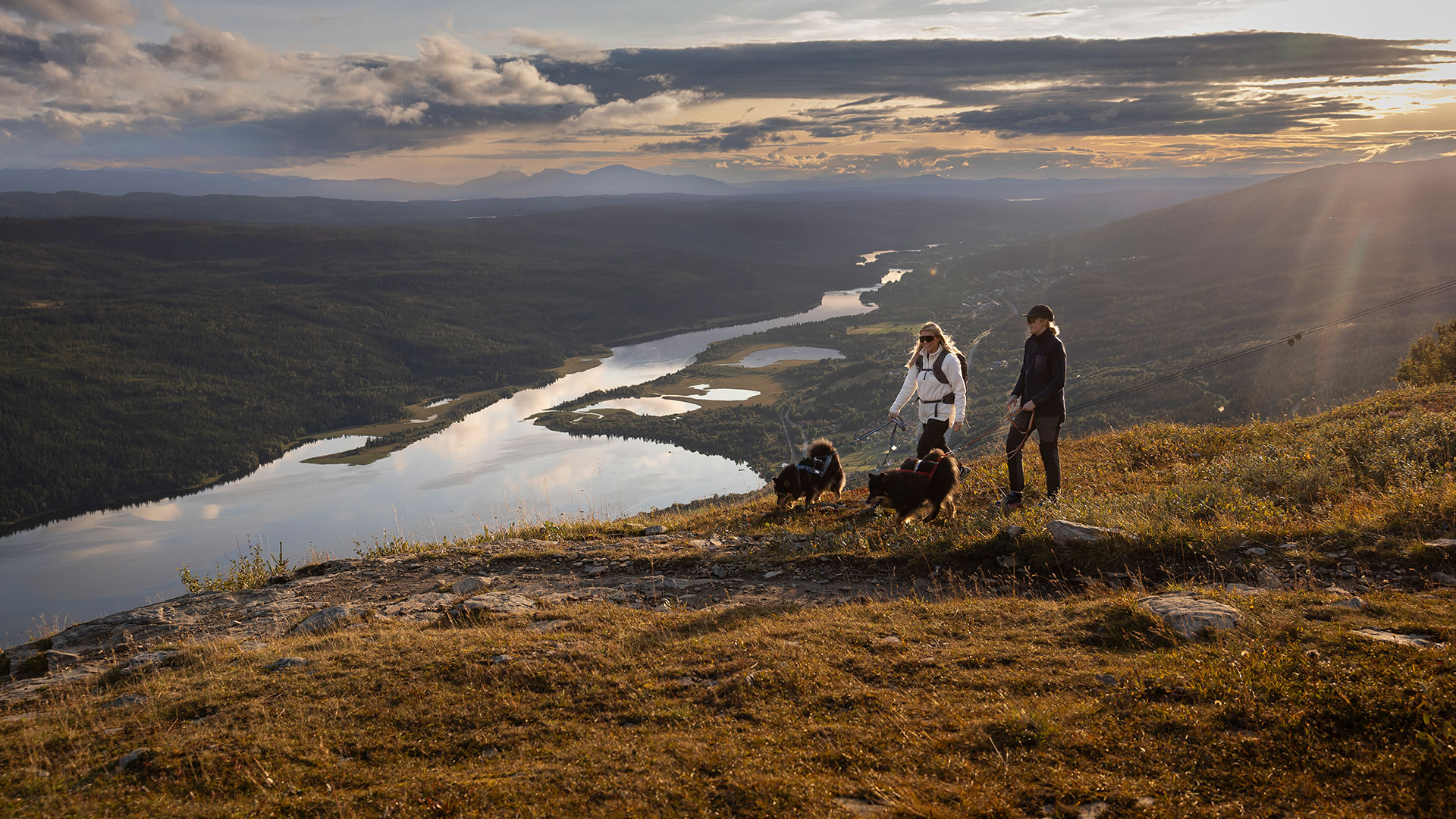
Frequently asked questions
Here we have collected answers to frequently asked questions about sustainability.
Snow production
Yes, you will. Our geographical location in Scandinavia will be favourable, according to the latest research reports, including a study recently published in Nature Climate Change, even though the winters will change with varying temperatures and increased annual precipitation. This means that climate change will have a direct and significant impact on our business in the future and that we will then need to work differently with e.g. snow production.
What we do as a company over the next 7 years will affect our future business model, where we have to contribute to lower carbon dioxide levels in the atmosphere. That's why we've set ambitious climate goals for 2030 to reduce our climate footprint by 50%. We are actively working throughout our operations to achieve this, by becoming electric, more energy efficient and making demands on suppliers to also set climate goals and reduce emissions, to name but a few.
To ensure we are doing enough, the climate goals have been developed to meet the objectives of the Paris Agreement, in line with the Science Based Targets initiative (SBTi), which also approved the goals this summer. It shows that we are taking responsibility and are on the right path.
With climate change, the need for electricity and water will increase. That's why we're working on our own energy vision: to become more self-sufficient in electricity by investing in e.g. solar energy and wind power. Already this year we have our first solar cells in several properties in Sälen, including at Experium, and we are currently carrying out a major inventory of all our roofs at all our destinations. We are also looking at a preliminary study with Jämtkraft with the aim of putting a solar cell park adjacent to the Scandinavian Mountains airport in Sälen-Trysil.
The most sustainable thing is, after all, to save on as much electricity as you can, which is why we have set goals to reduce both energy and fuel-related activities by 25% by 2030. In 2022/23, we reduced our total electricity consumption in our business by 10% compared to the previous year. SkiStar Fastighet has implemented a reduction of 6.2 % per m2.
In terms of water, we are building more ponds in areas such as Sälen. We are aware that we will need more water and are also applying for more pick-up locations in e.g. Åresjön. At the same time, we are concerned about the waterways that exist and we have also clearly targeted our water and energy consumption in our efforts.
Electricity prices and our operating costs vary over the years, but we also try to invest in self-produced electricity to keep track of costs and variations over time. Our prices are adjusted annually depending on the demand from guests during certain periods, but also depending on our operating costs. At present, it is therefore difficult to say exactly how prices will change in the future.
It is a circular process, where the water we use to make snow then melts and is captured in the same ponds and streams that we take the water from, so that it is reused year after year. It has an impact on nature, but we only use renewable energy from sun, wind and water, where we also aim to be more energy efficient. No additives are used, only air pressure, water and energy.
Air and water are mixed in a nozzle, which then sends the drops of water into the air, forming snow crystals. Cannon snow is nothing more than air and water squeezed together.
Energy-efficient snow-making systems are currently used to produce the right amount of snow in the right places and in the shortest amount of time possible. Please read more about how snow production takes place.
SummerSki is one of our latest developments, i.e. summer skiing on artificial grass. SummerSki is located in Hammarbybacken in Stockholm and on a slope in Sälen.
In Hammarbybacken, the base consists of a material that is made of partially recycled plastic. The base is made of bio-produced plastic from sugarcane, with the plastic mats themselves then produced in Sweden.
Suppliers
Our climate goal for the EQPE brand is to reduce EQPE's climate footprint by 50% per product by 2030 compared to the start year 2020.
The collections are designed to last a minimum of a three-year cycle before needing to be replaced, which makes for long-term production. Suppliers are carefully selected according to high standards of environmental and social responsibility, risk analysis and EQPE's quality and chemical requirements.
Please read more on the code of conduct that all our suppliers must follow. You can also find information on EQPE's own page and in our sustainability report.
Purchases through our suppliers account for a large share (34%) of our total waste chain. We are actively working to get our suppliers to change their ways, such as through ourour code of conduct, which sets out requirements for things like climate goals.
We are a commercial company, but at the same time we are also on a journey to redesign and offer more used goods for sale. See for example our Pre Used range. Our ski workshops are available for those who need to grind or repair their skis.
For a long time now, a large part of our business has also involved rentals. In addition to lodging, we rent out skis, bikes and other equipment. A new concept for 2023 is that we have also started to rent out ski clothing in Sälen. Read more about our circular mindset initiative.
Development
We have set ambitious climate goals for 2030 to reduce our climate footprint by 50% and are actively working across all our operations to achieve this - by going electric, becoming more energy efficient and setting requirements for suppliers, to name but a few.
SkiStar operates in Natura 2000 classified areas, which places higher demands on us as an operator. Our goal is to systematically evaluate whether we can avoid impact, minimise impact, restore or compensate for impact (the so-called consideration hierarchy).
Taking biodiversity into consideration and protecting the mountain environment is therefore one of our priority areas. We build in order to get our guests to the right places, and for our guests to use the trails and excellent descents we have made available so that they don't wear out the entire mountain.
Some examples:
When we develop downhill and ski areas today, we do it differently to how it was done in the past, including retaining "forest islands" and sections of forest such as when we developed the ski area in Åre Sadeln.
When the downhill slope in Åre was built in the 1980s, several blasts were made to make the construction possible. The part of the mountain that previously had a forest on the lower part of the slope has been hard to restore. As such, we have initiated a project together with the Swedish Regional Board and landowners to identify the best methods for restoring the vegetation in the area. The project is expected to run for two to three years.
Through our active owners Söderberg & Partners, we also have a co-operation with Ecogain to jointly look at how we can contribute further to promoting biodiversity at our destinations and to restore certain areas and landmarks, e.g. daylight saving time. Among other things, we're looking at an area of land we're developing in Vemdalen.
Flying
We have set ambitious 2030 goals and one of those goals is to halve our emissions. This goal covers our guests' travel to our destinations, including flights. Today, 2% of our guests fly, for example from other countries.
As a co-owner of the Scandinavian Mountains Airport, we look forward to continuing to work on the aviation industry's roadmap towards sustainable aviation fuel and fossil-free flying in Sweden by 2030.
For people travelling from closer to home, we try to facilitate other travel options such as trains, buses and electric cars. Today, a total of 86% of all our guests arrive by car. Currently, 96% and 95% of our guests travel by car to Sälen and Trysil respectively, and an increasing share of our guests travel by electric car or electric hybrid.
Parking
We have invested in HVO100, which is a renewable diesel. It emits much less CO2 than regular diesel, which means that we have radically reduced emissions from our piste machines.
We have also invested in solar cells in Sälen (e.g. Wasastugan and Experium) as well as several recycling stations.
Example per destination:
Sälen: Solar cells and recycling stations
Vemdalen: Recycling box
Åre: Recycling box
Trysil: HVO100 and recycling stations
Hemsedal: HVO100
Recycling
We are continuously increasing the number of bins and collaborating with Håll Sverige Rent and Hold Norge Rent to run info sessions together so that more people take their rubbish away with them and throw it away in the right place. Here, we also need our guests' help.
We try to improve our information to all guests, both before the trip and once you have arrived. All check-in stations should have recycling bags available with a QR code for where to find the nearest recycling station. Read more about it here.
This is an area we constantly want to improve in, and we have also partnered with Ragnsells in Trysil to further tackle the issue.
For this season, we have expanded the recycling facilities at Sälen and built 10 new recycling centres.







